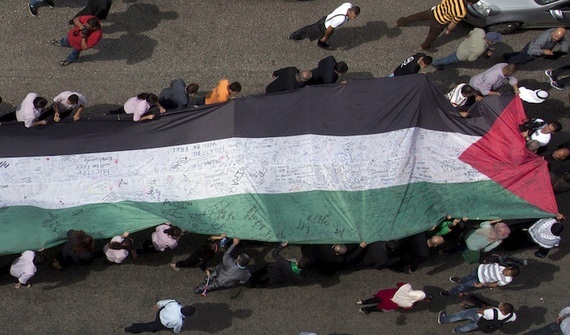|
Tension and violence are mounting in Jerusalem and the West Bank. Just how serious is the situation? ADAM CHANDLER On Wednesday, Barak Ravid, the diplomatic correspondent for the Israeli newspaper Haaretz, made this ominous declaration via Twitter: "The 3rd Intifada is already here—If there is anybody that still doesn't get it," he wrote, referring to the possibility of another Palestinian uprising against Israel erupting, as in the late 1980s and early 2000s.
This earned a quick reply from the Foundation for Defense of Democracies' Jonathan Schanzer, who urged Ravid to "calm down, man," although, minutes before, Schanzer himself had tweeted: "The level of Jerusalem-specific tension right now is unprecedented, I think. Always a tense town, but we're heading into something different." While Twitter may occasionally engender criticism for enabling hyperbolists, the backdrop for these statements is pretty alarming. As we noted, last week riots broke out in East Jerusalem following a suspected terrorist attack in Jerusalem in which a three-month-old Israeli-American infant died and a number of others were injured. On Friday, a 14-year-old Palestinian-American was killed by members of the Israel Defense Forces during violent protests in the West Bank. Things got even worse this week. On Wednesday, Yehuda Glick, a rabbi and advocate for the polarizing issue of permitting Jewish prayer on the Temple Mount, was shot in an apparent assassination attempt. On Thursday, Glick's purported assailant was reportedly killed by Israeli police. Riots ensued. Shortly afterward, Israeli officials took the extraordinary step of closing the Temple Mount to all worshipers, an act that a spokesman for Palestinian Authority President Mahmoud Abbas called a "declaration of war." Prognosticators have been warning of a new Intifada for years as peace talks have faltered, fighting has broken out, and the region has been engulfed by conflict. While these predictions may have been premature, the return of the Temple Mount—the holiest site in Judaism and the third-holiest site in Islam—to the forefront of the crisis between Israelis and Palestinians augurs badly. The bloody Second Intifada, which unraveled a rare era of (relative) calm and cooperation among Israelis and Palestinians, started in part because Israeli leader Ariel Sharon visited the Temple Mount in 2000 during a similar period of severely heightened tension and incitement. The violence of recent weeks only makes the burgeoning diplomatic crisis between the United States and Israel seem more dire. External factors may complicate matters as well. On Thursday, the Swedish government voted to recognize a Palestinian state, a step that Israeli Foreign Minister Avigdor Lieberman called "a miserable decision that strengthens the extremist elements and Palestinian rejectionism." He added, less-than-diplomatically, that the Middle East is “more complicated than self-assembly furniture at IKEA.” What Lieberman forgets is what the Middle East and IKEA furniture have in common⎯an overwhelming lack of sturdiness and no shortage of nuts. http://www.theatlantic.com/international/archive/2014/10/is-this-how-the-third-intifada-begins/382147/ Comments are closed.
|
Archives
March 2021
|

 RSS Feed
RSS Feed